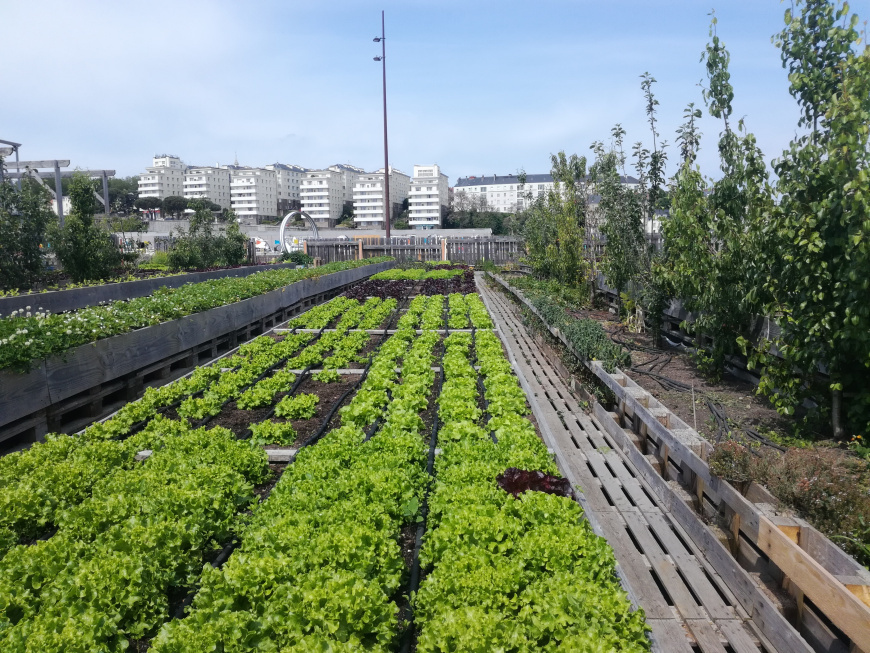Examine This Report on City Blooming
Examine This Report on City Blooming
Blog Article
The Best Guide To City Blooming
Table of ContentsThe smart Trick of City Blooming That Nobody is Talking AboutSome Ideas on City Blooming You Need To KnowCity Blooming Things To Know Before You BuyThe 30-Second Trick For City BloomingSee This Report about City Blooming
Fascinated in growing food to buy in the City of Chicago? Assuming about beginning a community garden? Changes to the Chicago Zoning Regulation permit farming usages like area gardens and urban ranches in several parts of the city. Below is a list of regularly asked concerns relating to the regulations and laws that growers need to consider when intending a city agriculture project.
The zoning amendment does not customize any type of other codes handling composting, building authorizations, buying or renting City had home, business licenses or ecological contamination. There are existing codes that control these concerns and they remain in full impact and may apply to your task. Area gardens are generally had or handled by public entities, public organizations or community-based companies and preserved by volunteers.
Urban ranches expand food that is planned to be marketed, either on a not-for-profit or for-profit basis. Because of their industrial objective, metropolitan farms need an organization license. Yes. A neighborhood yard is allowed to market excess produce that was grown on website if the sales are accessory or subservient to the yard's primary function described over.
The Greatest Guide To City Blooming
Composting is permitted but just for plant product that is produced and utilized on website. The quantity of compost material can not surpass 25 cubic backyards at any offered time according to the standards in 7-28-715 of the City's Municipal Code. Yes. Since the dirt at many brand-new yard sites requires modifying, garden compost, dirt, timber chips, or various other products can be obtained to create or boost the expanding room - balcony and patio garden design.

If a structure permit is called for then the hoophouse will be thought about an accessory building. You can learn more concerning the building permit requirements by speaking to the Department of Structures. The 25,000-square-foot dimension limitation is intended to stop a single community garden from dominating an offered block or taking away from the block's existing household or industrial personality.
The limit does not put on gardens found in Public Open Area (POS) areas. Can there be greater than one neighborhood garden that is 25,000 square feet on a single block? Yes. The dimension limit relates to individual yards, not to specific blocks. No. Fence is not called for, nonetheless, yards that have large car park areas might be required to install secure fencing or other landscape design functions.
9 Easy Facts About City Blooming Shown
B1 & B2 areas require that all industrial use activities be performed indoors. R areas limit commercial activity. The regulations reflect the function and intent of the Zoning Code. Is fence needed for metropolitan ranches? Yes. Fences may be needed, along with landscape design and testing, for certain parking areas and outdoor work or storage locations relying on place and the certain activity taking location.
Yes. Urban farms need building permits and zoning authorizations before building. Other kinds of city review might be required depending upon certain structures, activities, dimension, landscape design, licensing, public health and stormwater management concerns. Much of these requirements are determined in the job layout or allowing procedure, nonetheless, the candidate might be responsible to individually identify details licenses or permits that might be needed.
The Division of Service Affairs and Consumer Protection can help figure out the details type of business license that's required. Off street auto parking is required for the majority of business tasks in Chicago. The needed number of auto parking rooms is based on the number of employees functioning on site and not the square footage of the growing room.
Getting The City Blooming To Work

Yes. An urban farm can market garden compost product generated on site, nonetheless, the procedure should abide by the guidelines in 7-28-715 of the Chicago Municipal Code. Yes. Aquaponic systems are permitted inside your home on city farms in lots of zoning areas. A zoning evaluation and building authorization is called for in order to mount structures or systems and an organization permit is required as defined over.
Up to five hives or colonies of honey might be maintained as an accessory usage. Beekeepers must register with the Illinois Department of Agriculture. To find out more regarding the recommended zoning modification you may speak to the Department of Real Estate and Economic Advancement, Bureau of Planning and Zoning at 312.744.8563.
, which takes location in rural locations at the edge of suburban areas.
The smart Trick of City Blooming That Nobody is Discussing
It can entail a motion of natural cultivators, "foodies" and "locavores", who seek to form social networks started on a common ethos of nature and neighborhood holism. These networks can establish using official institutional assistance, ending up being integrated into regional town planning as a "change community" movement for sustainable metropolitan development.
In either instance, the much more straight accessibility to fresh vegetable, fruit, and meat items that may be understood via city see here farming can boost food protection and food safety and security while reducing food miles, causing reduced greenhouse gas discharges, consequently adding to environment change mitigation. Several of the initial evidence of city agriculture comes from Mesopotamia.
Report this page